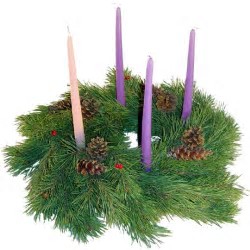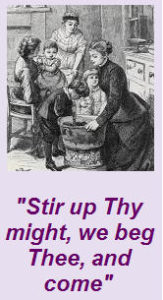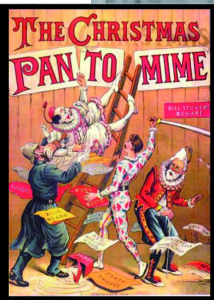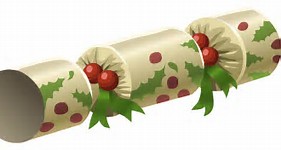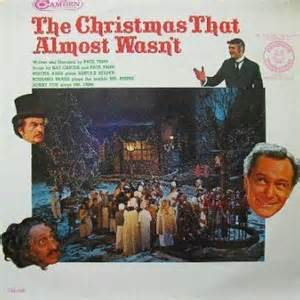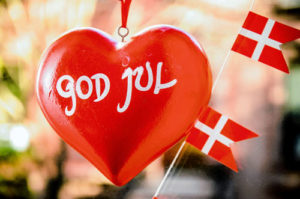
In Denmark it would be difficult to be unaware of the approach of Christmas. Every child has an Advent calendar which when opened reveals a candy or a picture and most familes have an Advent candle or wreath. Charitable Danes buy Children’s Developing Country Calendars with the profits going to a Third World project. Danish television broadcasts the “Children’s Christmas Calendar” starting on December 1 with a different puppet show or fairy tale every day until Christmas. At the beginning of the month Christmas lights adorn buildings and Christmas trees and displays are set up outdoors.
Danes spend December preparing for the celebrations to come: gift buying and wrapping, Christmas card sending, with each card marked by a Christmas Seal ( a Danish invention) and baking. Among the cookie favourites are pebbernødder (like the German pfeffernüsse), vanilla cookies, deeep-fried klejne and honey-cakes. Danes also like to make home-made candies and cakes such as marzipan, rum balls and apple cake. Many decorations are homemade, especially the red-and-white Christmas heart. A recent (since 1945) imported custom from Sweden is the St Lucia procession which takes place in schools and public institutions on December 13. A girl dressed in white with a wreath of fir and candles leads children in singing. Some families cling to the tradition of erecting the Christmas tree at the last moment to surprise the children but other families decorate the tree together, with the Christmas hearts, Danish flags, tinsel and candles with a star at the top.
The Christmas lunch — usually in the form of an office party — is a popular custom which, despite the name, can be held at any time of the day. The menu will include herring, liver paté, ham, sausage, cheese and biscuits with plenty of beer (often a Christmas beer brewed only for that time of year) and schnapps. These parties have a reputation for being on the wild side but most are quite tame events. On December 23, Little Christmas Eve, it is common to invite guests to drink glögg, a spiced red wine.
On Juleaften, Christmas Eve, shops close early and people rush home to be with their families. Some will spend the afternoon in church, others in trimming the tree but all will look forward to the traditonal dinner. Roast goose is the main course, accompanied by potatoes and red cabbage but the meal must contain, either as a starter or dessert, rice porridge. Hidden in the porridge is an almond and the one who finds it is considered lucky for the coming year and gets a small prize, often a marzipan pig. When dinner is over and the washing up is done, the tree is revealed and presents are opened. Many Danish families preserve the lovely custom of walking, with joined hands, around the tree singing a Christmas carol. Another Christmas Eve custom that has been kept for centuries is the setting out the juleneg, a sheaf of grain for the birds.
In Denmark gifts are brought by a Santa Claus figure called the Julemanden who is reputed to live in Greenland, a Danish possession, and travel by reindeer sleigh. He is assisted in his efforts by native sprites known as Nisser. These are elves dressed in red and grey with pointed red hats who live in attics and barns; they have a mischievous side and need to be placated, preferably by leaving out a bowl of rice pudding for them.
Juleaften is the high point of Danish Christmas celebrations. The next two days, Christmas Day and Second Christmas, are official holidays, spent visiting, relaxing with family and friends and eating smørrebrod, open-faced sandwiches and drinking aquavit.
Like the British the Danes will sit down for a few minutes to listen to a royal broadcast which the monarch gives at 6 p.m. on December 31. New Year’s Eve is a time of parties, dining out and pranks — the Danish sense of humor finds great pleasure in the practical jokes played on Nytaarsaften.
On January 6, Epiphany or Three Kings’ Day, the tree is taken down and disposed of — sometimes it is turned into firewood and sometimes it is hung with suet and seeds for the birds. Candles are lit in the house in honour of the Magi and the Christmas season is over for another year.


